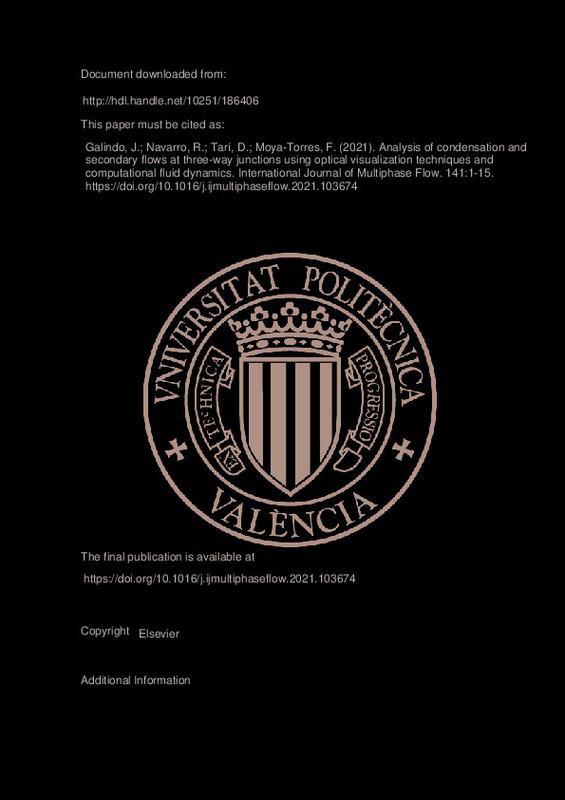JavaScript is disabled for your browser. Some features of this site may not work without it.
Buscar en RiuNet
Listar
Mi cuenta
Estadísticas
Ayuda RiuNet
Admin. UPV
Analysis of condensation and secondary flows at three-way junctions using optical visualization techniques and computational fluid dynamics
Mostrar el registro completo del ítem
Galindo, J.; Navarro, R.; Tarí, D.; Moya-Torres, F. (2021). Analysis of condensation and secondary flows at three-way junctions using optical visualization techniques and computational fluid dynamics. International Journal of Multiphase Flow. 141:1-15. https://doi.org/10.1016/j.ijmultiphaseflow.2021.103674
Por favor, use este identificador para citar o enlazar este ítem: http://hdl.handle.net/10251/186406
Ficheros en el ítem
Metadatos del ítem
| Título: | Analysis of condensation and secondary flows at three-way junctions using optical visualization techniques and computational fluid dynamics | |
| Autor: | Moya-Torres, Francisco | |
| Entidad UPV: |
|
|
| Fecha difusión: |
|
|
| Resumen: |
[EN] Three-way junctions are employed in almost all piping systems, whenever two streams need to be merged into one duct. In some applications, the mixing between streams plays an important role for determining the performance ...[+]
|
|
| Palabras clave: |
|
|
| Derechos de uso: | Reconocimiento - No comercial - Sin obra derivada (by-nc-nd) | |
| Fuente: |
|
|
| DOI: |
|
|
| Editorial: |
|
|
| Versión del editor: | https://doi.org/10.1016/j.ijmultiphaseflow.2021.103674 | |
| Código del Proyecto: |
|
|
| Agradecimientos: |
This work has been partially supported by "Conselleria de Innovacion, Universidades, Ciencia y Sociedad Digital de la Generalitat Valenciana" through grant number GV/2020/008. Francisco Moya is partially supported through ...[+]
|
|
| Tipo: |
|







![[Cerrado]](/themes/UPV/images/candado.png)


